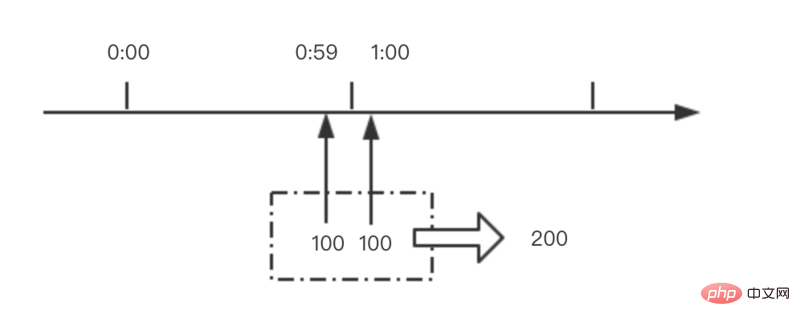 Operation and Maintenance
Operation and Maintenance Linux Operation and Maintenance
Linux Operation and Maintenance Describe nginx's built-in variables in detail
Describe nginx's built-in variables in detailThe built-in variables that can be used in the nginx configuration file start with the dollar sign $, and some people call them global variables. Among them, the values of some predefined variables can be changed.
$arg_PARAMETER The value of this variable is: the value of the variable name PARAMETER parameter in the GET request.
$args This variable is equal to the parameters in the GET request. For example, foo=123&bar=blahblah;This variable can only be modified
$binary_remote_addr The client address in binary code form.
$body_bytes_sent The number of bytes of the transmitted page
$content_length The Content-length field in the request header.
$content_type Content-Type field in the request header.
$cookie_COOKIE The value of cookie COOKIE.
$document_root The value specified in the root directive is currently requested.
$document_uri is the same as $uri.
$host The host header (Host) field in the request. If the host header in the request is unavailable or empty, it is the name of the server that processes the request (the value of the server_name directive of the server that processes the request). Values are lowercase and do not include ports.
$hostname The machine name uses the value of the gethostname system call
$http_HEADER The content in the HTTP request header, HEADER is the content in the HTTP request converted to lowercase, - becomes _ (dash becomes Underscore), for example: $http_user_agent (value of Uaer-Agent), $http_referer...;
$sent_http_HEADER The content in the HTTP response header, HEADER is the content in the HTTP response, converted to lowercase, - becomes _ (dash changes to underscore), for example: $sent_http_cache_control, $sent_http_content_type...;
$is_args If $args is set, the value is "?", otherwise it is "".
$limit_rate This variable can limit the connection rate.
$nginx_version The currently running nginx version number.
$query_string is the same as $args.
$remote_addr The IP address of the client.
$remote_port The port of the client.
$remote_user Username that has been verified by Auth Basic Module.
$request_filename The file path of the current connection request, generated by the root or alias directive and URI request.
$request_body This variable (0.7.58+) contains the main information of the request. Makes sense in locations using proxy_pass or fastcgi_pass directives.
$request_body_file The temporary file name of the client request body information.
$request_completion Set to "OK" if the request is successful; set to empty if the request is not completed or is not the last part of a series of requests.
$request_method This variable is the action requested by the client, usually GET or POST.
Including versions 0.8.20 and earlier, this variable is always the action in the main request. If the current request is a subrequest, the action of the current request is not used.
$request_uri This variable is equal to the original URI containing some client request parameters. It cannot be modified. Please see $uri to change or rewrite the URI.
$scheme protocol used, such as http or https, such as rewrite ^(.+)$ $scheme://example.com$1 redirect;
$server_addr server address, after completion This value can be determined after a system call. If you want to bypass the system call, you must specify the address in listen and use the bind parameter.
$server_name Server name.
$server_port The port number where the request reaches the server.
$server_protocol The protocol used by the request, usually HTTP/1.0 or HTTP/1.1.
$uri The current URI in the request (without request parameters, the parameters are located in $args) is different from the value of $request_uri passed by the browser. It can be modified through internal redirection or using the index directive. Exclude protocol and hostname, for example /foo/bar.html
The above is the detailed content of Describe nginx's built-in variables in detail. For more information, please follow other related articles on the PHP Chinese website!
 内存飙升!记一次nginx拦截爬虫Mar 30, 2023 pm 04:35 PM
内存飙升!记一次nginx拦截爬虫Mar 30, 2023 pm 04:35 PM本篇文章给大家带来了关于nginx的相关知识,其中主要介绍了nginx拦截爬虫相关的,感兴趣的朋友下面一起来看一下吧,希望对大家有帮助。
 nginx限流模块源码分析May 11, 2023 pm 06:16 PM
nginx限流模块源码分析May 11, 2023 pm 06:16 PM高并发系统有三把利器:缓存、降级和限流;限流的目的是通过对并发访问/请求进行限速来保护系统,一旦达到限制速率则可以拒绝服务(定向到错误页)、排队等待(秒杀)、降级(返回兜底数据或默认数据);高并发系统常见的限流有:限制总并发数(数据库连接池)、限制瞬时并发数(如nginx的limit_conn模块,用来限制瞬时并发连接数)、限制时间窗口内的平均速率(nginx的limit_req模块,用来限制每秒的平均速率);另外还可以根据网络连接数、网络流量、cpu或内存负载等来限流。1.限流算法最简单粗暴的
 nginx+rsync+inotify怎么配置实现负载均衡May 11, 2023 pm 03:37 PM
nginx+rsync+inotify怎么配置实现负载均衡May 11, 2023 pm 03:37 PM实验环境前端nginx:ip192.168.6.242,对后端的wordpress网站做反向代理实现复杂均衡后端nginx:ip192.168.6.36,192.168.6.205都部署wordpress,并使用相同的数据库1、在后端的两个wordpress上配置rsync+inotify,两服务器都开启rsync服务,并且通过inotify分别向对方同步数据下面配置192.168.6.205这台服务器vim/etc/rsyncd.confuid=nginxgid=nginxport=873ho
 nginx php403错误怎么解决Nov 23, 2022 am 09:59 AM
nginx php403错误怎么解决Nov 23, 2022 am 09:59 AMnginx php403错误的解决办法:1、修改文件权限或开启selinux;2、修改php-fpm.conf,加入需要的文件扩展名;3、修改php.ini内容为“cgi.fix_pathinfo = 0”;4、重启php-fpm即可。
 如何解决跨域?常见解决方案浅析Apr 25, 2023 pm 07:57 PM
如何解决跨域?常见解决方案浅析Apr 25, 2023 pm 07:57 PM跨域是开发中经常会遇到的一个场景,也是面试中经常会讨论的一个问题。掌握常见的跨域解决方案及其背后的原理,不仅可以提高我们的开发效率,还能在面试中表现的更加
 nginx部署react刷新404怎么办Jan 03, 2023 pm 01:41 PM
nginx部署react刷新404怎么办Jan 03, 2023 pm 01:41 PMnginx部署react刷新404的解决办法:1、修改Nginx配置为“server {listen 80;server_name https://www.xxx.com;location / {root xxx;index index.html index.htm;...}”;2、刷新路由,按当前路径去nginx加载页面即可。
 nginx怎么禁止访问phpNov 22, 2022 am 09:52 AM
nginx怎么禁止访问phpNov 22, 2022 am 09:52 AMnginx禁止访问php的方法:1、配置nginx,禁止解析指定目录下的指定程序;2、将“location ~^/images/.*\.(php|php5|sh|pl|py)${deny all...}”语句放置在server标签内即可。
 Linux系统下如何为Nginx安装多版本PHPMay 11, 2023 pm 07:34 PM
Linux系统下如何为Nginx安装多版本PHPMay 11, 2023 pm 07:34 PMlinux版本:64位centos6.4nginx版本:nginx1.8.0php版本:php5.5.28&php5.4.44注意假如php5.5是主版本已经安装在/usr/local/php目录下,那么再安装其他版本的php再指定不同安装目录即可。安装php#wgethttp://cn2.php.net/get/php-5.4.44.tar.gz/from/this/mirror#tarzxvfphp-5.4.44.tar.gz#cdphp-5.4.44#./configure--pr


Hot AI Tools

Undresser.AI Undress
AI-powered app for creating realistic nude photos

AI Clothes Remover
Online AI tool for removing clothes from photos.

Undress AI Tool
Undress images for free

Clothoff.io
AI clothes remover

AI Hentai Generator
Generate AI Hentai for free.

Hot Article

Hot Tools

Dreamweaver CS6
Visual web development tools

ZendStudio 13.5.1 Mac
Powerful PHP integrated development environment

Atom editor mac version download
The most popular open source editor

SublimeText3 Mac version
God-level code editing software (SublimeText3)

Safe Exam Browser
Safe Exam Browser is a secure browser environment for taking online exams securely. This software turns any computer into a secure workstation. It controls access to any utility and prevents students from using unauthorized resources.





